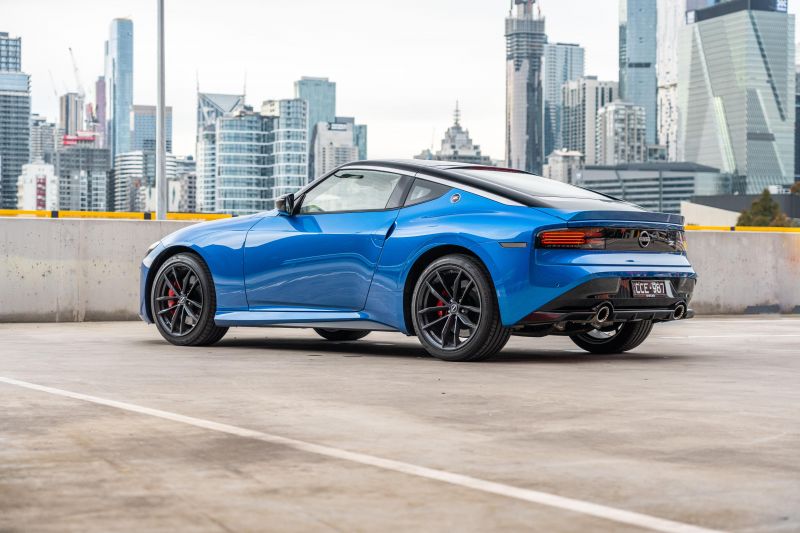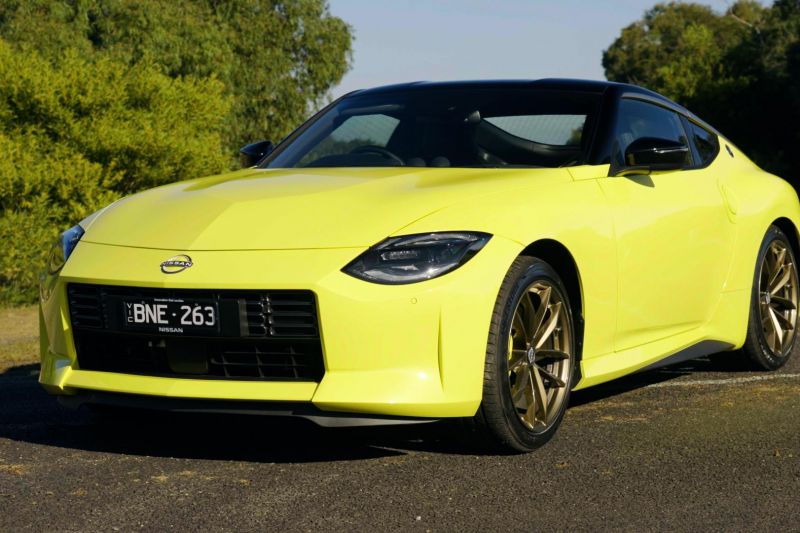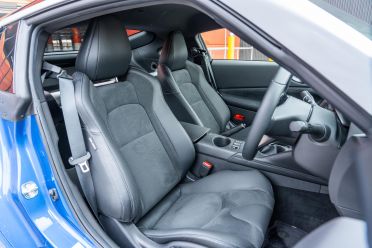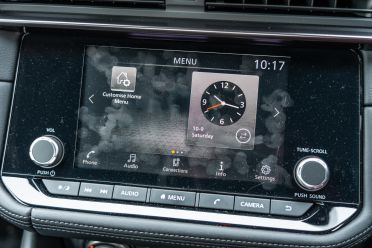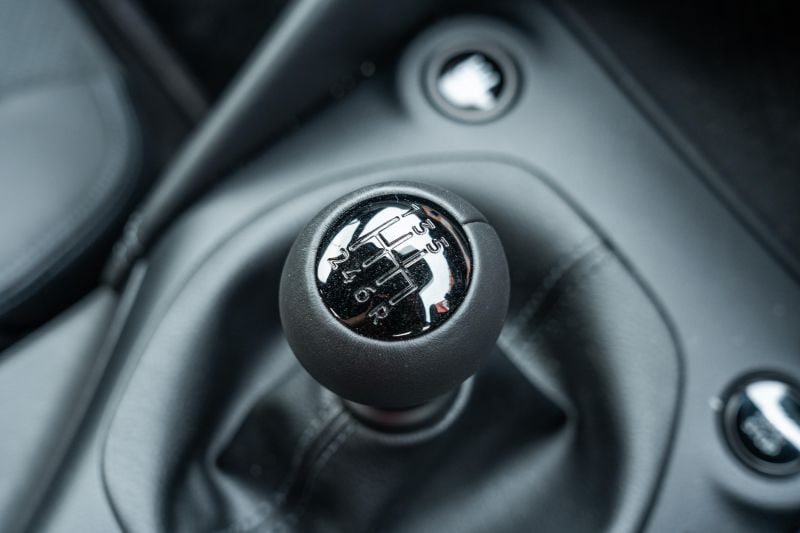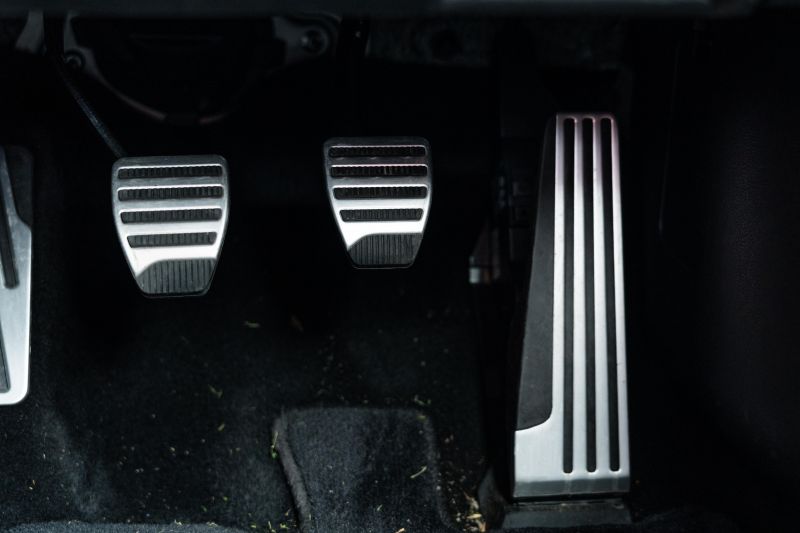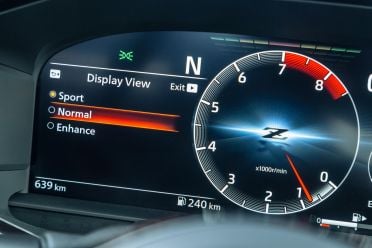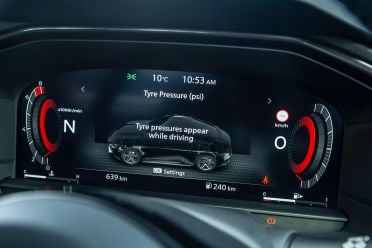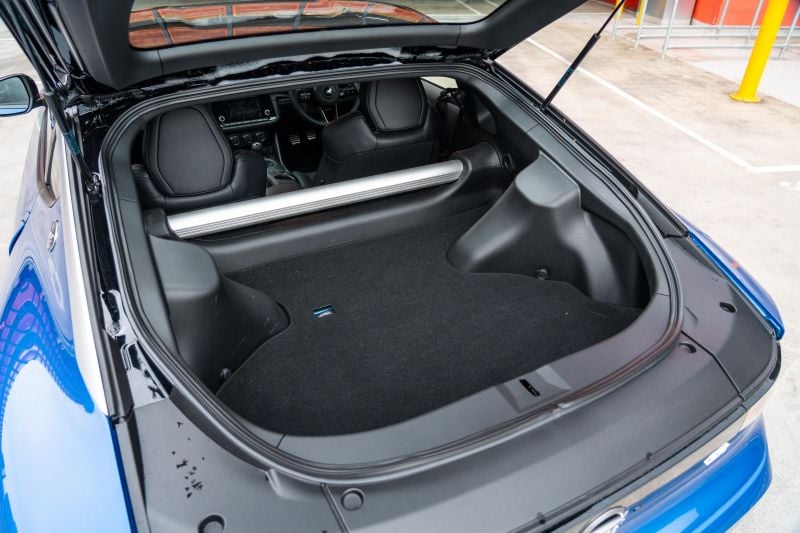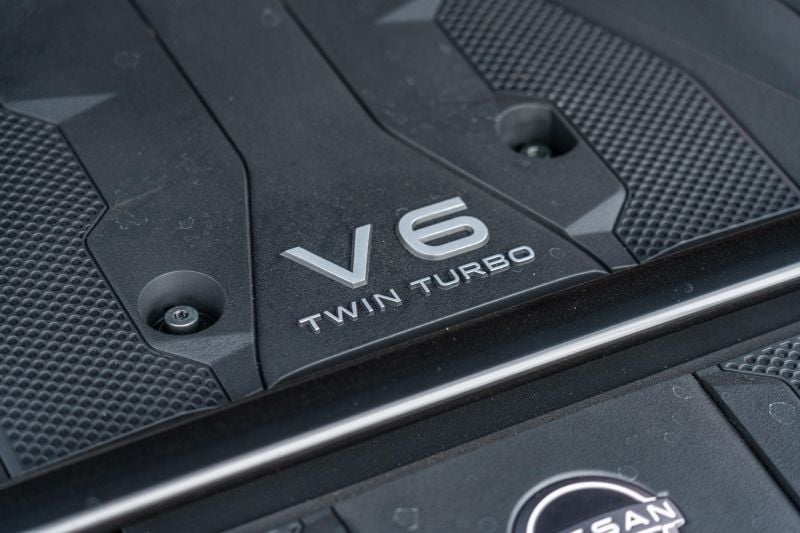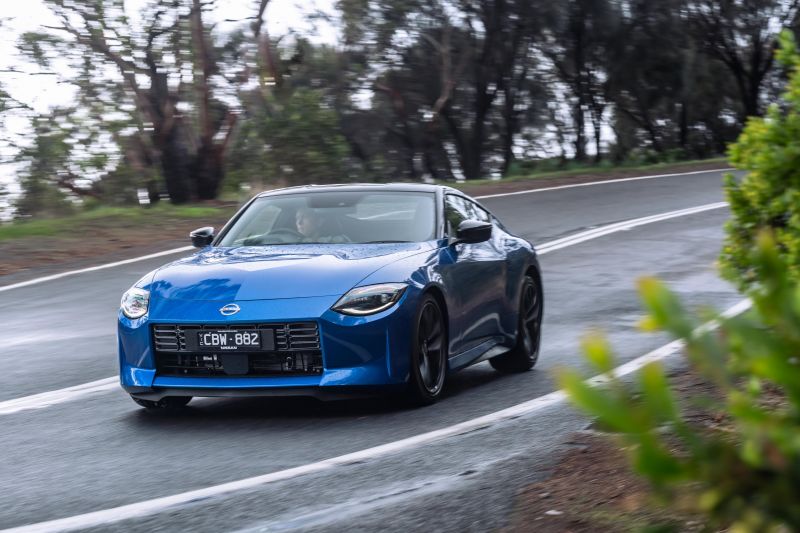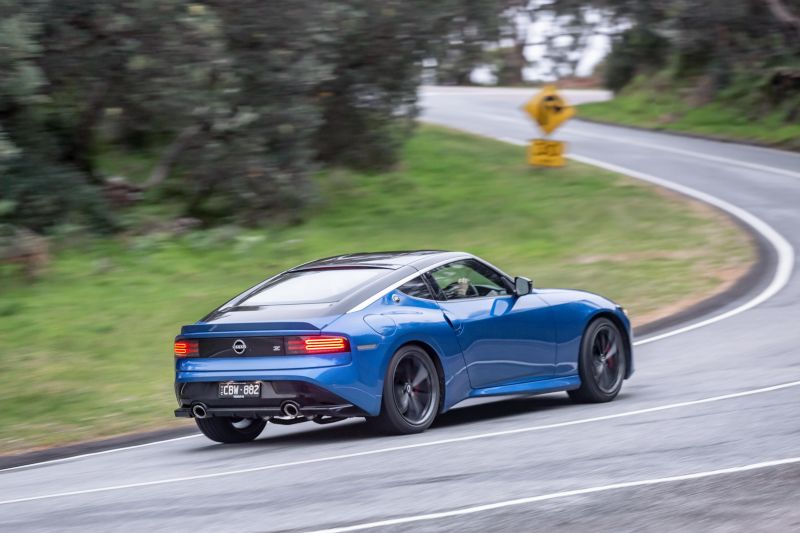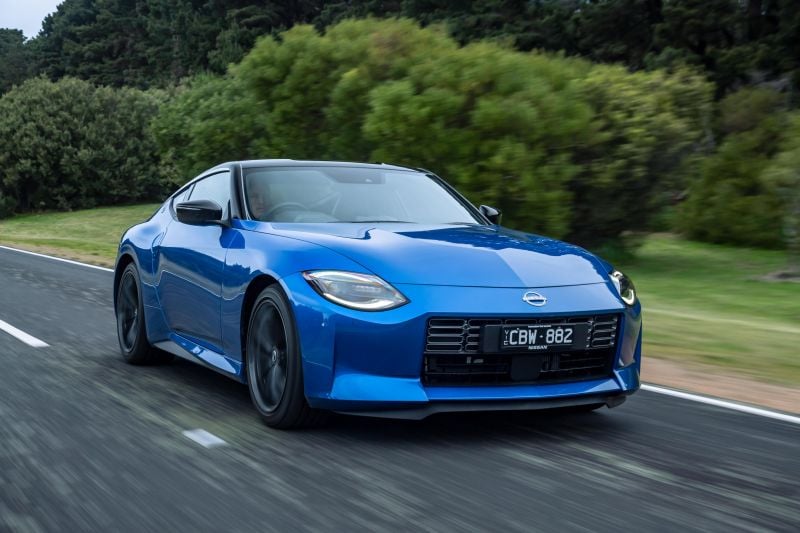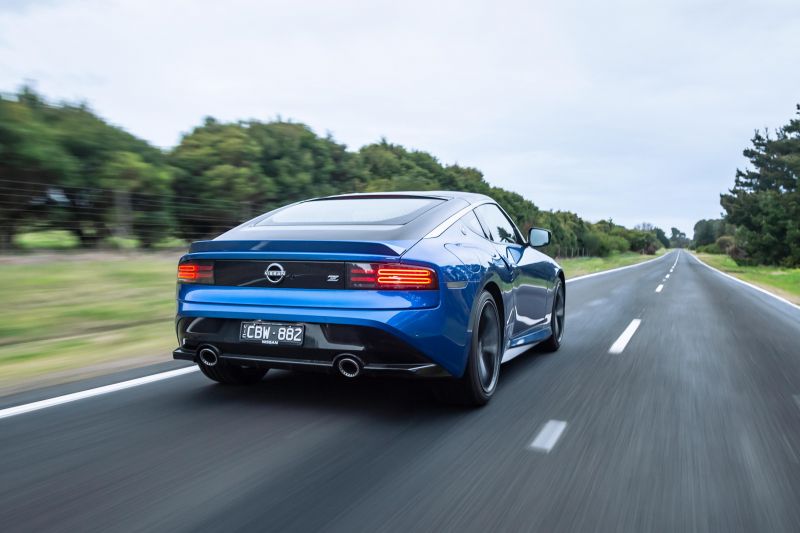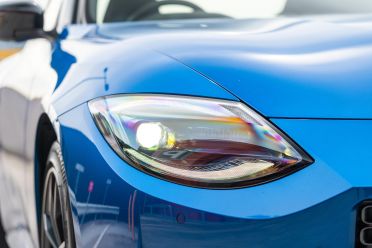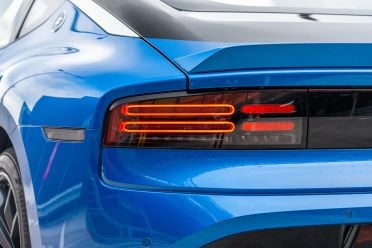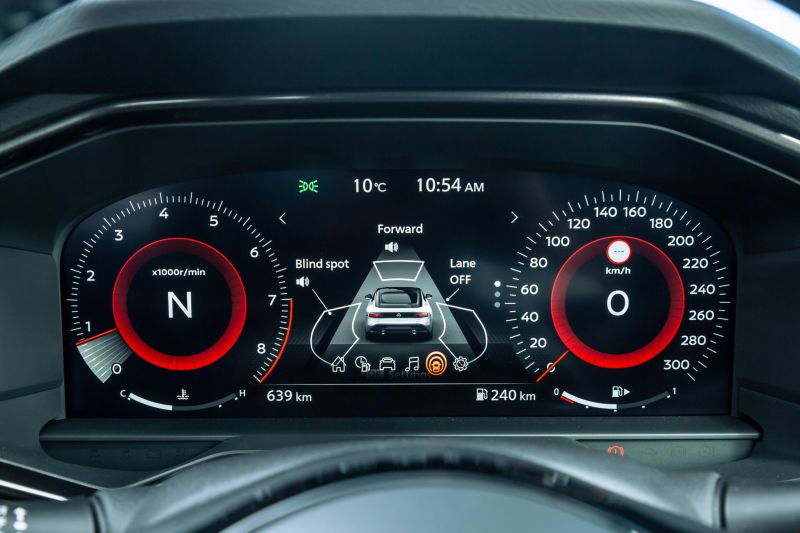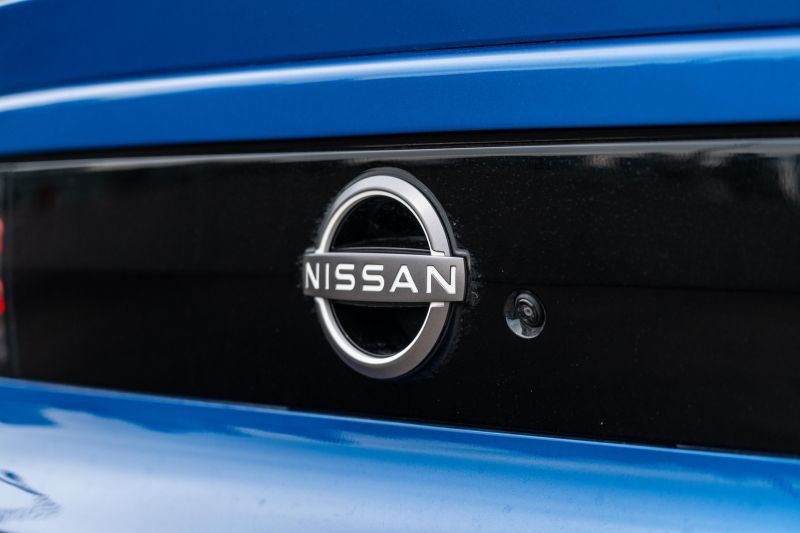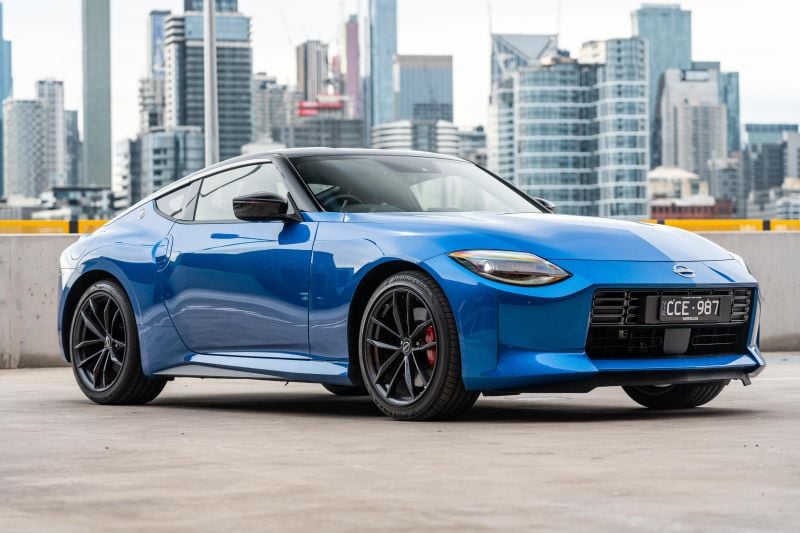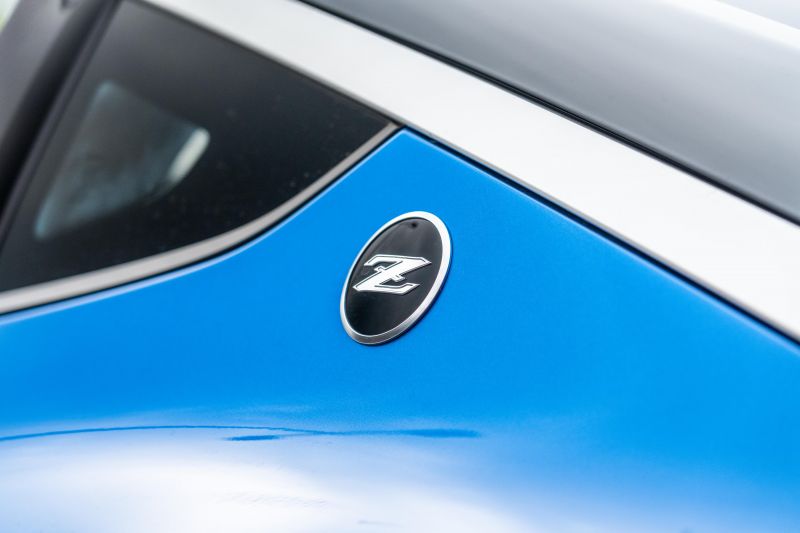Z isn’t dead.
Nissan has dusted off the second-most famous badge in its back catalogue for 2022. This isn’t a Nissan Z model, it’s now simply called the Nissan Z.
With retro-futuristic looks and a combination of 370Z and Infiniti Q60 parts under the skin, this is not an all-new car.
That’s representative of where the industry is heading; a ground-up sports car just wasn’t an option for Nissan given the money it’s being forced to pour into electric vehicle development.
New or not though, it’s an absolute showstopper. Forget about a Ferrari or a Lamborghini, if you want the eyes of the world on you it’s a Z you should be driving.
It’s a winner, then? Well, for that to be true you’d need to be able to confidently say ‘it’s brilliant’ when someone inevitably asks how it drives.
And while there’s no doubt it’s fascinating, I’m not sure it’s brilliant.

How much does the Nissan Z cost?
The base Nissan Z (our tester) kicks off at $73,300 before on-road costs, and jumps to $80,700 before on-roads for the limited Proto spec.
The new Z’s price compares to the $61,990 (manual) and $64,490 (auto) stickers for the 2021 Nissan 370Z Nismo.
A BMW 230i Coupe sells for $70,900 before on-roads, and the Toyota Supra currently starts at $87,000 before on-roads. The best-selling Ford Mustang is now sold out in Australia until the next generation arrives in 2023.
What is the Nissan Z like on the inside?
Nissan has dug deep into the parts bin to make the Z’s cabin, but that doesn’t mean it isn’t a good place to spend time.
You enter using a door handle lifted from the 370Z, and slot into a pair of seats of the same origin. The dashboard is all new though, right down to the trio of gauges sitting above the touchscreen. In a world increasingly dominated by screen, they’re a lovely nod to the past.
The fundamentals are decent, but not exactly standout. The driving position isn’t particularly tall-person friendly, and headroom is tighter than in a Mustang or Supra, although it is possible to get comfortable with a bit of fiddling.
The fact Subaru offers more boot space, front-seat space, and a set of rear seats in the cheaper, smaller BRZ points to the compromises inherent in the platform underpinning the Z.
Over-the-shoulder visibility is about what you’d expect from a two-seat coupe, so the addition of blind-spot monitoring is a win, and the prominent V-shaped bonnet bulge makes the car easy enough to place on the road.
The key touchpoint all feel reasonably high quality. The wheel is trimmed in smooth leather, the gear shifter is a chunky unit, and the handbrake falls easily to hand.
Nissan has clearly put some thought into getting the fundamentals right, because the alloy-finished pedals are also nicely spaced.
Technology was one of the biggest issues with the 370Z. The new model gets the same infotainment system that will feature in the X-Trail and Qashqai.
It’s serviceable, but not standout. Apple CarPlay and Android Auto are wired, and the system is easy to navigate but short on any real excitement.
The highlight is the digital dashboard. Some real effort has gone into making it look flashy, with a prominent central tachometer and gear indicator in Sport Mode.
Of course, you could also be boring and just stick with the basic X-Trail (or should that be Outlander?) views available in other drive modes.
Storage space isn’t great, although it’s better than in the 370Z. There’s a pair of cupholders, door pockets that are good for a water bottle, and an underarm storage bin.
There are no rear seats to worry about, and the boot is smaller than you might expect.
It’s quite long, but the angle of the glass tailgate means anything large or boxy will need to be carried in the narrowest part of the boot because it’s at the tallest point of the roof.
You’re not buying the Z because it’s practical, and the load space on offer is largely in keeping with you’d get in a Toyota Supra.
What’s under the bonnet?
The Z is powered by a version of the VR30DDTT 3.0-litre twin-turbo engine from the Infiniti Q60 Red Sport, making 298kW and 475Nm.
The six-speed manual is adapted from the unit used in the 370Z, with a heavy-duty Exedy clutch and a rev-matching system that removes the need to heel-and-toe.
Coupled with a 1600kg kerb weight in the manual on test here, the (much) more powerful heart allows the new Z to hit 100km/h in 4.7 seconds based on our testing at launch.
The Z drinks 98 RON premium unleaded at a claimed rate of 10.8L/100km on the combined cycle, and features a 62L fuel tank. We saw 9.0L/100km on a highway run to the hills, with some spirited driving thrown in for good measure.
How does the Nissan Z drive?
The Z might look like a sports car, and come from a line of grand tourers, but it’s not really either in 2022.
There’s no doubt it’s fast, but it’s not fast in the sort of anywhere, any time way we’ve come to expect from all-wheel drive hot hatches.
When the road is dry and it’s hooked up the 3.0-litre twin-turbo engine pins you back in the seat and holds you there through the torque-rich mid-range. There’s a couple of beats of turbo lag below 2000rpm, but once the boost needle starts flickering the Z really gets up and boogies.
Shame it sounds so flat and industrial. Nissan has never quite managed to make its modern Z cars sound good, and the new Z is no exception.
It’s a bit of a loose unit in the wet. Put your foot down and even with all the driver assists active it’ll light up the back tyres when the boost kicks in, and then keep them spinning if you don’t do the sensible thing and back out.
Even on what feels like light throttle you can get the back end talking. It’s old-school, a feeling exacerbated by the heavy and slightly clunky manual shifter.
With a low take-up point and heavy, springy action, the clutch takes some getting used to, and the shifter itself has a notchy action that demands firm, deliberate inputs.
First to second in particular requires a firm hand or a bit of patience, and cross-gate shifts aren’t overly intuitive.
With practice you can muscle it about pretty quickly, and the rev-match software means you can focus on the brake, clutch, and shifter without having to add right-ankle gymnastics to the mix.
It’s more engaging than an automatic could ever be, and it’s refreshing to drive a car that doesn’t reveal all its secrets to you immediately. But a more intuitive set of controls wouldn’t go astray, and would make the Z an easier car to gel with.
With a brawny turbocharged engine and an engaging, if slightly unintuitive shift, the Z has all the makings of a grand tourer. But the driving position isn’t particularly road-trip friendly, and the ride is decent but not what you’d call cosseting.
Throw in an all-too-generous serving of road noise above about 80km/h, not to mention the limited boot, and the Z isn’t really that either.
As for a sports car? There’s no doubt it’s fun to drive, but the Z lacks the focus of a Toyota Supra in the corners.
The steering is quite slow off-centre, and there’s quite a bit of body movement when you’re pushing hard – both roll, and pitch when you brake or accelerate hard.
It’s not a corner carver, and it makes you work to go quickly, but there’s a lovely, old-school rear-wheel drive balance to it.
Brake and get into gear early, let the car settle through the mid-corner, feed in the turbo torque through corner exit, and the Z will shoot out onto the next straight with just a hint of oversteer – or more than a hint if you’re so inclined.
The Z isn’t a sports car, and it isn’t a grand tourer. It’s more like a modern muscle car; Japan’s answer to the Ford Mustang.
What do you get?
Nissan Z highlights:
- 12.3-inch TFT configurable digital instrument cluster
- 8.0-inch central infotainment display
- Apple CarPlay, Android Auto
- 8-speaker Bose audio system
- Tri-gauge analogue display (boost, turbo fan speed, voltage)
- Electrically heated, leather-accented seats
- Suede trim door finisher
- Active Noise Cancellation
- Active Sound Enhancement
- Intelligent Key with push-button start and panic alarm
- Auto-levelling LED headlights
- LED daytime running lights
- 4-way powered driver seat with manual lifter, thigh, lumbar support
Is the Nissan Z safe?
The Nissan Z has not been tested officially by Euro NCAP or ANCAP, nor was the 370Z before it.
Atop six airbags, the Nissan Z gains a range of the active driver assists that were missing from the 370Z as it approached the end of its life.
Standard safety features include:
- AEB incl. Pedestrian detection
- Adaptive cruise control
- Forward collision warning
- Blind-spot monitoring
- Rear cross-traffic alert
- Lane departure warning
- High Beam Assist
- Traffic Sign Recognition
- Front and rear parking sensors
- Reversing camera
- Hill Start Assist
- Tyre pressure monitoring
How much does the Nissan Z cost to run?
The Nissan Z is covered by a five-year, unlimited-kilometre warranty.
Maintenance is required every 12 months or 10,000 kilometres, and the first five services in the manual cost a combined $2340 using Nissan’s capped-price service plan.
CarExpert’s Take on the Nissan Z
Forget about everything it’s not, because the motoring world is better for having the Nissan Z.
It’s a true showstopper in person, with concept car looks that’ll have strangers accosting you in the streets to know more, and there’s no doubt the driving experience is engaging.
It feels a bit like one of those almost cars, though. Almost a sports car, almost a grand tourer, it’s a bit caught between worlds. It’s going to be fascinating to see where Nissan takes it next.
There’s nothing wrong with the Z as it stands, but the prospect of a more focused Nismo is tantalising. While you’re at it Nissan, give us a more relaxed version to go with it.
Click the images for the full gallery
MORE: Everything Nissan Z





